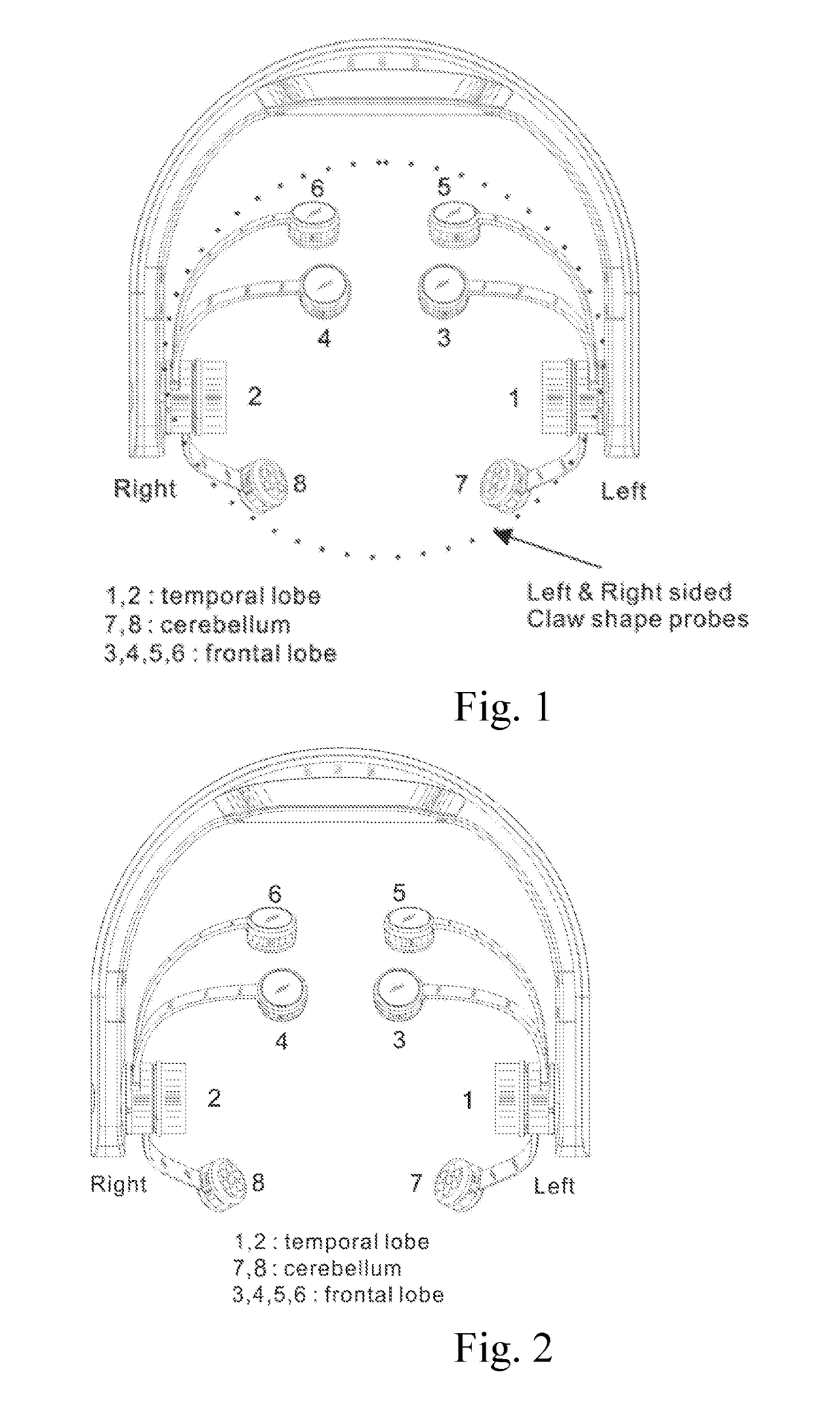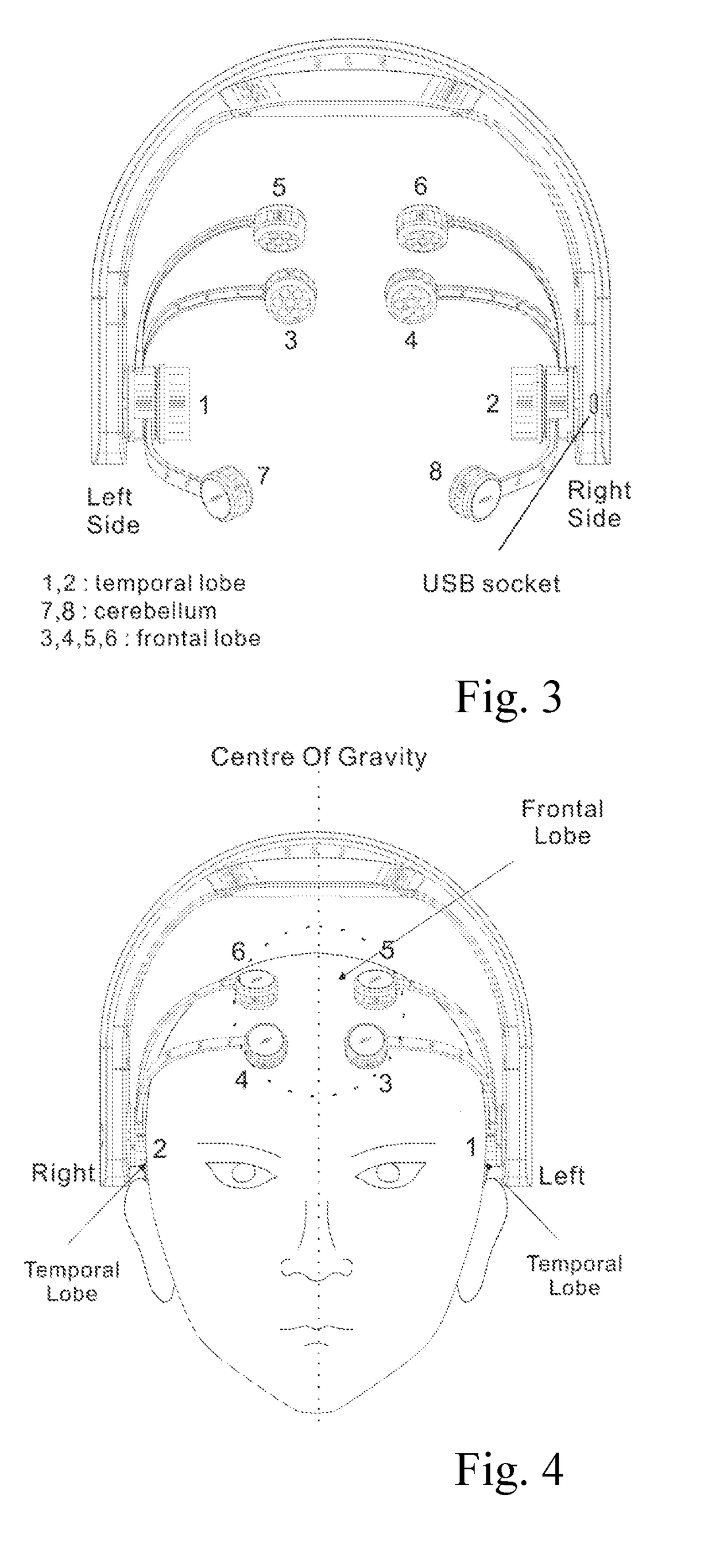Portable Composite Waveform Transcranial Electrical Stimulation System
a transcranial electrical stimulation and composite waveform technology, applied in the field of electrotherapy, can solve the problems of severe attenuation of signals received, difficult to overcome inherent impedance, and resultant impedance, and achieve the effect of extreme reduction of power consumption
- Summary
- Abstract
- Description
- Claims
- Application Information
AI Technical Summary
Benefits of technology
Problems solved by technology
Method used
Image
Examples
Embodiment Construction
[0062]The electrical stimulation signals are output to the recipient via a delicate electrical probes system (FIG. 1) in which electrodes are resided into relevant positions. A total of eight individual electrodes are equipped in the headset as shown (FIG. 2: Front View, FIG. 3: Back View). When the headset is put onto the head as shown in FIG. 4 and FIG. 5, the probes system's structural design is made such that the orientations of the electrodes' contacts are located at the relative spatial distribution of brain's functional regions as shown in FIG. 6.
[0063]Once TES signals arrived onto the recipient's scalp surface, numerous pathways carrying different micro-currents are created. The created pathways and their current magnitudes are depending on the snap shot of that instantaneous state of brain as well as influenced by the composite waveform's varying parameters, i.e. amplitude, frequency and phase. These pathways do not exist persistently. They are all developed according to st...
PUM
 Login to View More
Login to View More Abstract
Description
Claims
Application Information
 Login to View More
Login to View More - R&D
- Intellectual Property
- Life Sciences
- Materials
- Tech Scout
- Unparalleled Data Quality
- Higher Quality Content
- 60% Fewer Hallucinations
Browse by: Latest US Patents, China's latest patents, Technical Efficacy Thesaurus, Application Domain, Technology Topic, Popular Technical Reports.
© 2025 PatSnap. All rights reserved.Legal|Privacy policy|Modern Slavery Act Transparency Statement|Sitemap|About US| Contact US: help@patsnap.com



